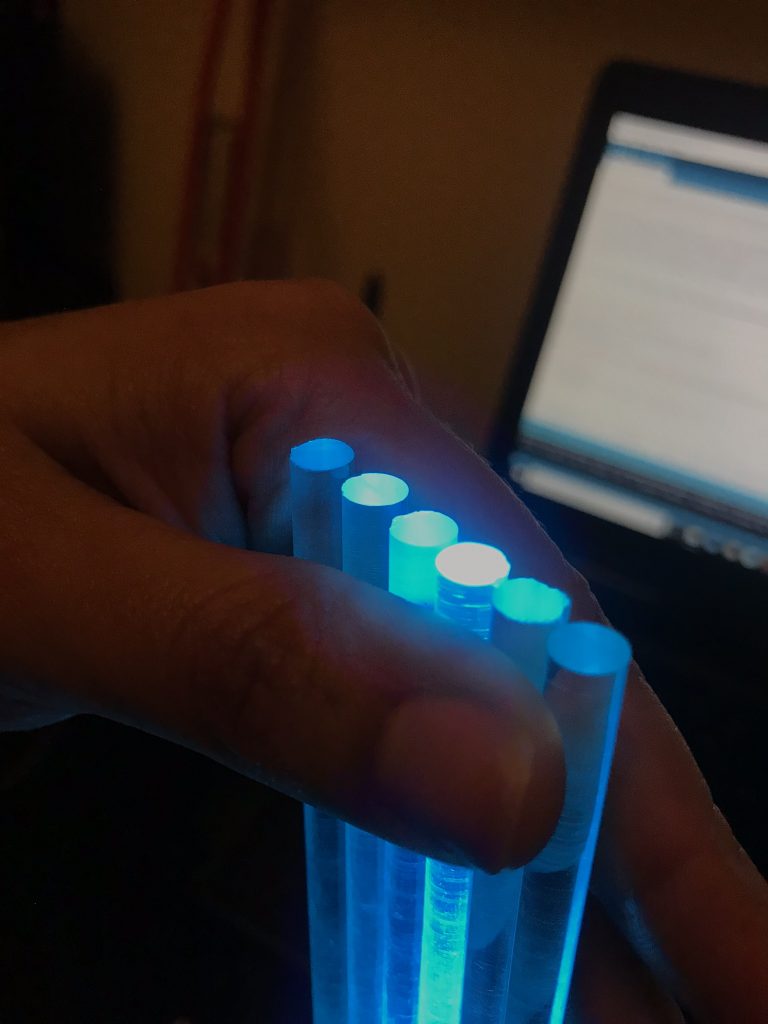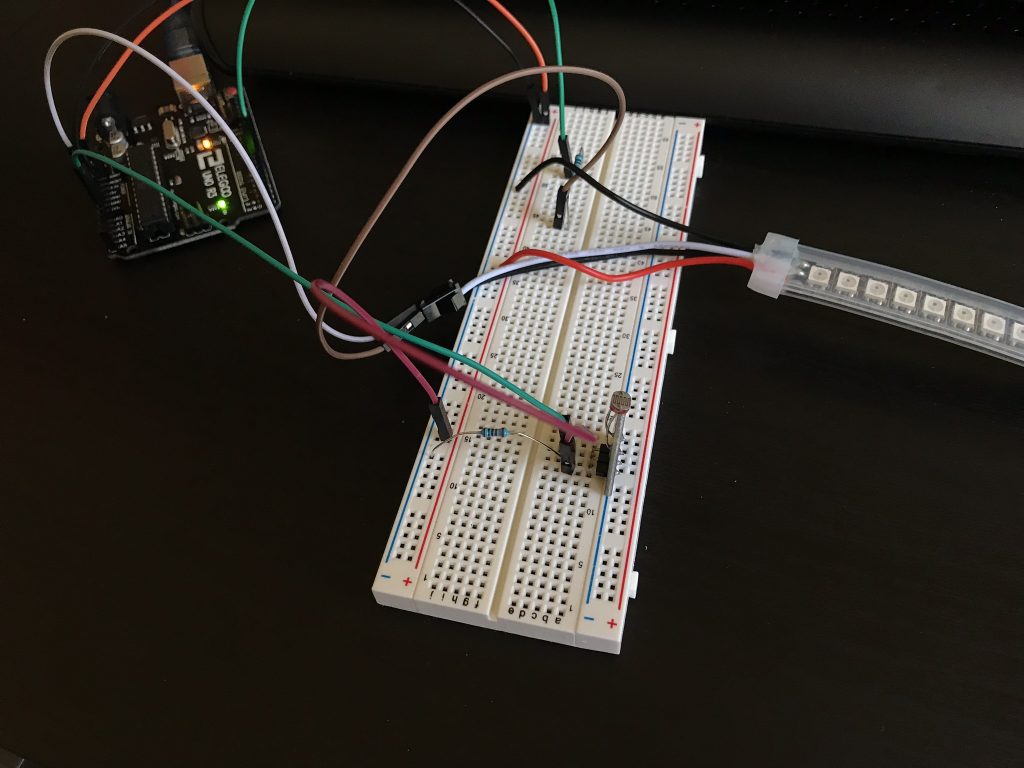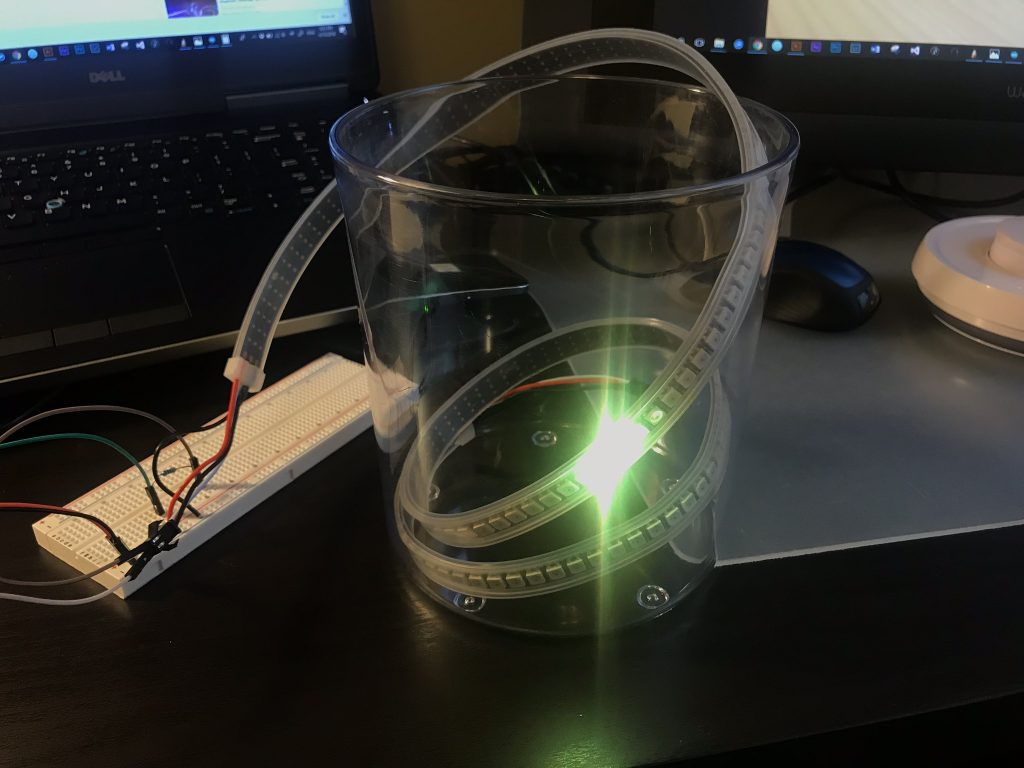Goal:
In this phase of the project, various technical approaches were considering as methods to resemble the light emitted by a firefly in a jar.
The first explored technology was a matrix of LED’s – Charlieplex-, which consisted in making a cloud of LEDs (soldering one by one) until achieving the desired lighting effect. This matrix was discarded since it requires a lot of space for wiring and hardware (hard-points), besides it is complex to test-build in the desired final object.
Fiber optic was another technology tested to make the effect of fireflies flying in a jar. This was not a good direction since the intensity of the light was not enough and it also required a matrix of complex LEDs on the base of the object. This image shows an exploration using acrylic rods sandblasted on the tips, to work as a fiber optic. A series of LED transmit light from the bottom of the rod.


Lasers, projectors and a mechanical system were other alternatives that were evaluated, but finally the programmable LED’s strip get the desired effect with the variations of speed and tonality of the light. In this option there is an important challenge, since the programmable LEDs require a lot of current, so a very large battery pack is needed, and this must be assembled inside the artifact without breaking its form and optimal operation. One of the requirements is to avoid using cables and power supply connected to a wall, since this would drastically affect the experience.
List of Components:
- x1 Arduino Uno
- x1 Breadboard
- x1 Adafruit Neopixel 144 RGB LED Strip
- x1 330kohm Resistor
- Jumper Wires
Assembly Process:
To create this prototype, I connected the Strip to the 5V of the Arduino and to the digital pin 6. Since I was planning to turn on 6 LEDs and not the whole strip, I was OK with the current provided by the computer (in this case). For the final product, I must consider the number of LEDs that are going to be on and the amount of current needed. If I would like to use all the LEDs in full white brightness, I would need around 9A to hold the whole strip. Each LED runs with around 60mA.


User Testing:
The objectives in this phase are raised from the observation of children and adults catching fireflies supported in a ‘playful’ context, and different ways in which they caught fireflies should be analyzed. The other important objective is to understand how users interact with an artifact that has no instructions, is it intuitive to use? is it too complex? why?.
In summary, in the process of catching fireflies can be identified 3 different paths.
Using the hands: Although it takes many attempts, this is a common way to catch fireflies, since it is relatively easy to catch them. For the specific development of the project, this method of catching fireflies is not the most appropriate, since an external artifact (sensor) is required and together with this a complex system that affects the simple and intuitive nature of the experience.
Using a net: Like the previous one, this is a very common and simple way to catch fireflies. This method would consist of two systems (a net -to catch- and a container -to keep the fireflies-) complex both technically and objectively, since simultaneous work is required for the experience.
Using a container: In this method the net method is basically used as the previous one, where the fireflies are trapped directly with the container so as not to let them escape. This way of catching fireflies is what most resembles the product you want to finally reach; because it is an experience with the product as such (the product is experience). It is a way that finally does not add complexity to the final product because it has no external systems, and also intuitively communicates the objective of the product in its entirety. It is important to clarify that, like any product, instructions are required, which in this particular case, was developed in the form of a story book as a sub-artifact inspired by nostalgia and memory.
References:
https://github.com/technobly/NeoPixel-KnightRider
https://learn.adafruit.com/adafruit-neopixel-uberguide/the-magic-of-neopixels